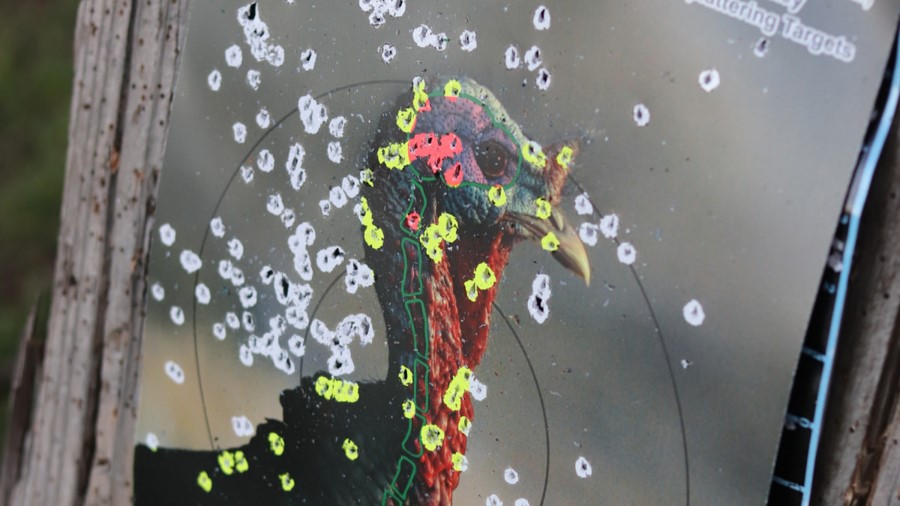
Don't miss the bird! Patterning a shotgun involves determining how the pellets from the shotgun shell are distributed on a target at a specific distance. This is important for understanding the shotgun's effectiveness and for selecting the right choke constriction and ammunition for different shooting scenarios. Here's how to pattern a shotgun:
What You'll Need:
- Shotgun, AKA Boomstick
- Ammunition (the same type you plan to use for your intended shooting)
- Large sheets of paper (such as poster board or butcher paper)
- Target stand or an improvised backstop
- Tape or adhesive
Steps:
-
Prepare Your Shooting Range:
- Find a safe and controlled environment to conduct your patterning test. Ensure there's a suitable backstop to capture the pellets and prevent any stray shots from going beyond the intended area.
-
Choose Your Distance:
- Determine the specific distance at which you want to pattern your shotgun. Common distances include 20, 25, or 30 yards for shotguns used in hunting or sporting clays.
-
Set Up Your Target:
- Attach a large sheet of paper to your target stand or backstop. Ensure it's securely in place.
-
Mark the Target:
- Place a small aiming point or crosshair at the center of your paper target. This will serve as your point of aim during the test.
-
Shoot the Shotgun:
- Stand at the chosen distance (e.g., 25 yards) from the target.
- Mount your shotgun properly and take a shot at the marked aiming point. Use the same stance and form you would use during your intended shooting activity.
-
Examine the Pattern:
- Carefully approach the target and examine the pattern of pellet hits on the paper.
- Pay attention to the density of the pellet hits in the central area (called the "kill zone") as well as any stray pellets outside the main pattern.
-
Analyze the Pattern:
- Assess the pattern to determine if it meets your expectations. Depending on your needs, you might want a dense central pattern for close-range shots or a more evenly spread pattern for longer-range shots.
- Note any irregularities or gaps in the pattern.
-
Adjust Choke and Ammunition:
- Based on your analysis, you can make adjustments to your shotgun's choke constriction or try different types of ammunition to achieve the desired pattern.
- For example, if you need a tighter pattern, you might switch to a full choke. If you need a wider pattern, you might use a modified choke. Check out our article on effective choke distances HERE.
-
Repeat if Necessary:
- If you make changes to your shotgun, repeat the patterning process until you achieve the desired pattern for your specific shooting needs.
-
Document Your Findings:
- Record your results, including the choke, ammunition type, and distance used for the patterning test. This information will be valuable for future reference.
Patterning your shotgun helps ensure that it performs optimally for your intended shooting activities, whether it's hunting, trap shooting, or sporting clays. Remember to always follow firearm safety rules and regulations when handling shotguns and ammunition. Check out our post on shotgun chokes HERE.
